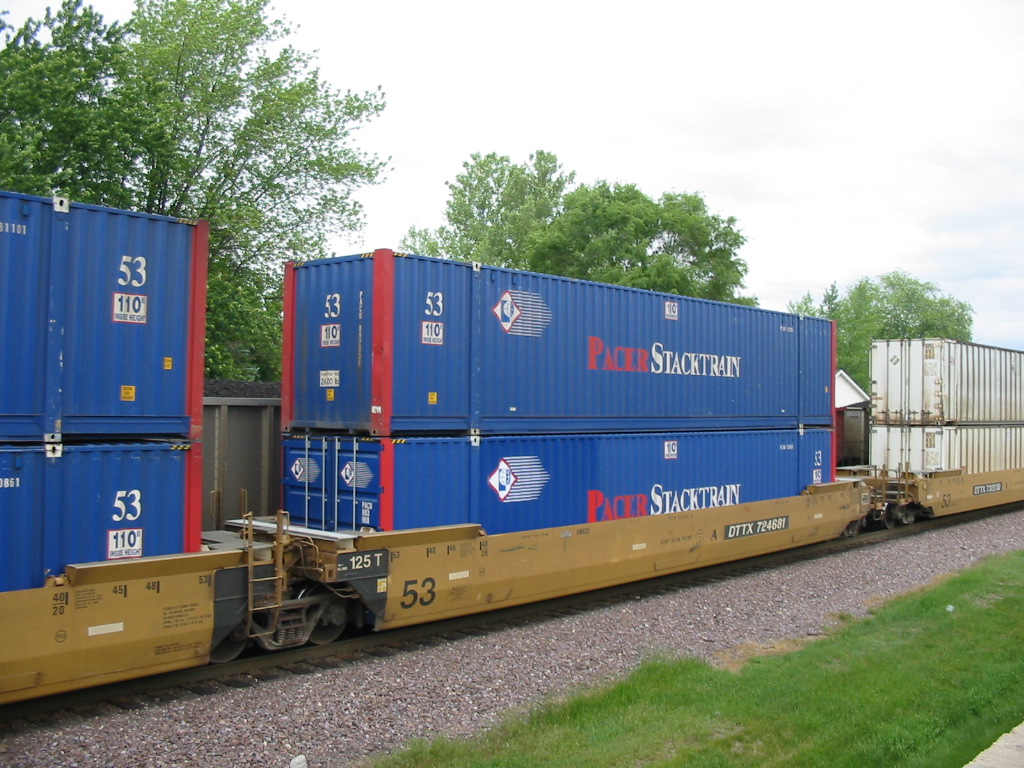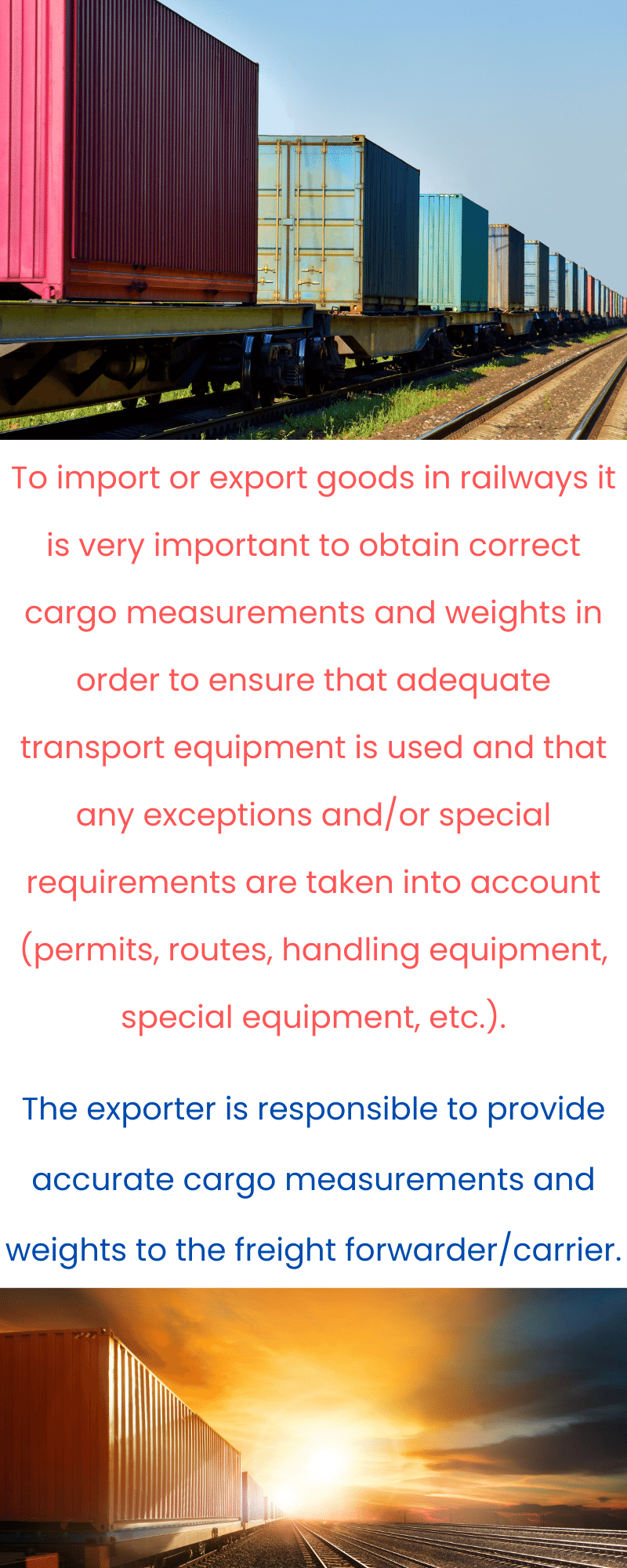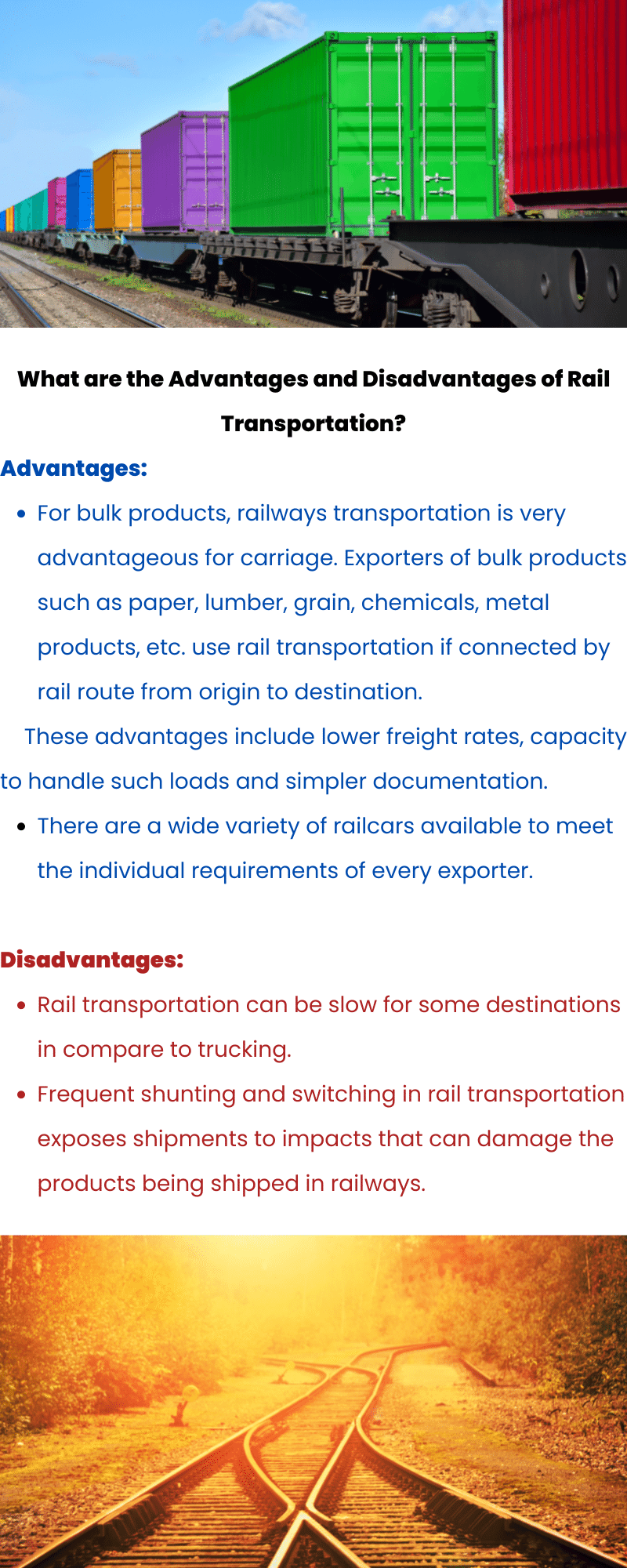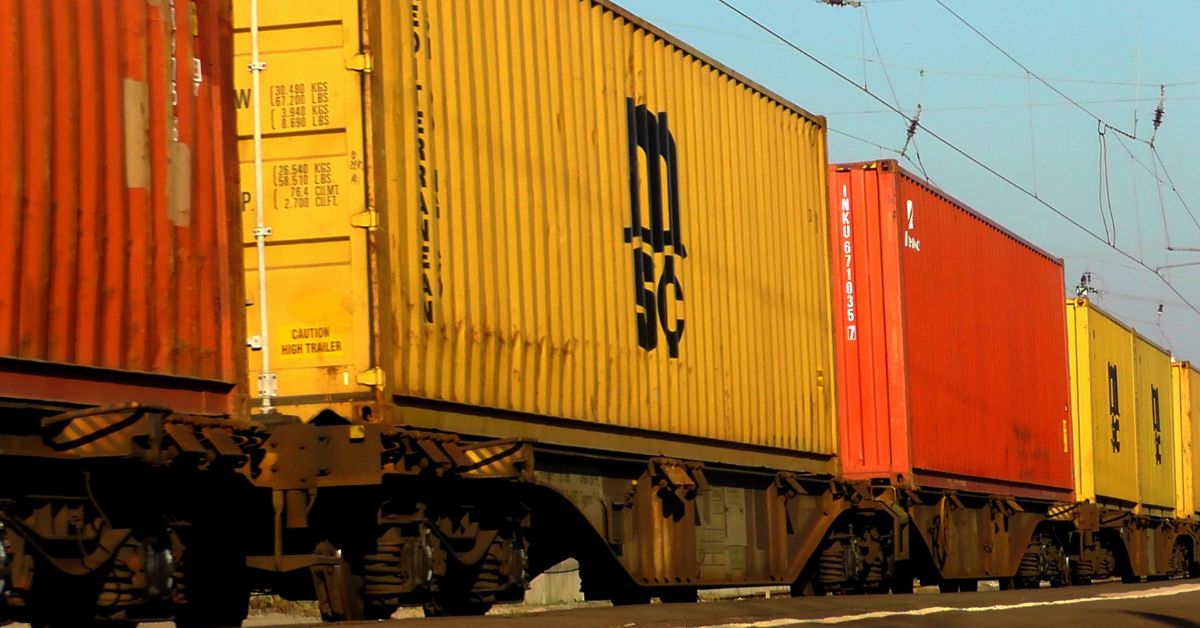Most of the land border countries, local, interprovincial transportation of goods and freight is done by railways. Railway transportation is fast and comparatively cheap.
To export any goods by Railway Transportation it is very important to obtain correct cargo measurements and weights in order to ensure that adequate transport equipment is used and that any exceptions and/or special requirements are taken into account (permits, routes, handling equipment, special equipment, etc.).
The exporter is responsible to provide accurate cargo measurements and weights to the freight forwarder/carrier; this information is usually included in the commercial documentation like (commercial invoice and/or packing list).
When the cargo is shipped as a part-load (less-than-truck load (LTL), less-than-car load (LCL)), the forwarder has the possibility to have it measured and weighed at the receiving terminal and make adjustments accordingly.
Table of Contents
- Rail Equipment
- What is Over-Dimensional Cargo ?
- How the Railways Freight Quotation is provided ?
- Documents need in Export any Goods by Railway Transportation
- What to do after goods arrive in destination ?
- What are the Advantages and Disadvantages of Rail Transportation ?
Rail Equipment
Well Cars

Well Cars are designed to transport double-stacked containers. The bottom container sits in a depressed “well” between the trucks (“truck” is the wheel/bogie assembly on which the car rides).
By sitting between the trucks, the bottom container rides low and a second container can be stacked on top of it and remain within the clearance envelope.
The car may be designed to handle only double-stacked containers, or it can be a dual-purpose car that can handle either double-stacked containers or trailers.
Spine Cars

The container (or trailer) sits above the trucks. Due to the height of the platform above rail, there is insufficient clearance to handle double-stacked containers.
The car may be designed to handle single-stacked containers or trailers.
What is Over-Dimensional Cargo ?
Over-dimensional cargo, also called out-of-gauge cargo, oversize cargo or dimensional cargo, is freight that exceeds the legal standard-size criteria of carriers based on the mode of transport, the area and the itinerary.
When moving over-dimensional freight, the forwarder must always keep in mind rail clearances for any tunnels or bridges that the cargo might pass over or through while en route.
The railways have specially trained personnel, qualified in handling and itinerary planning for the movement of a heavy-lift or oversized piece of equipment.
How the Railways Freight Quotation is provided ?
The railways freight is quoted based on the type of service required, origin and destination, equipment needed, time frame, volume, commodity and class, cargo specifications (type of packaging, weights and sizes), perishability, risk of damage and other relevant details.
Rail rates are generally expressed in lump sum per railcar, with ancillary and surcharges for fuel, currency, demurrage and switching.
Documents need in Export any Goods by Railway Transportation
To complete the railways shipment execution process, every shipment requires three types of documentation:
- Commercial documentation
- Financial documentation
- Transportation documentation
Commercial Documentation:
- The packing list is a detailed list of contents of the shipment
- A pro-forma invoice is sometimes required to confirm the order before shipping and to enable the importer to open letter of credit.
- The commercial invoice documents what the buyer must pay the seller and provides information to the countries of export, import and transit.
- The certificate of origin certifies the origin of the merchandise.
Financial Documentation:
Depending on the terms of the contract between the seller and the buyer and the method of payment agreed to (e.g., open account, advance payment, documentary credit or documentary collections), various financial documents are required, like the letter of credit advice and confirmation (if applicable), the draft, the promissory note, the bill of exchange, as required by financial institutions.
Transportation Documentation:
The main document here is the bill of lading issued by the carrier in here it is the rail bill of lading.
This rail bill of lading serves as the receipt for the goods, a contract of carriage and, in some cases, for ocean freight, a transferable title of ownership.
What to do after goods arrive in destination ?
When the shipment arrives at destination, the proper parties like importer and importer’s agent are notified, delivery appointments are made and the shipment is delivered according to instructions and against payment of applicable charges to the customs clearance.
What are the Advantages and Disadvantages of Rail Transportation ?
Advantages:
- For bulk products, railways transportation is very advantageous for carriage. Exporters of bulk products such as paper, lumber, grain, chemicals, metal products, etc. use rail transportation if connected by rail route from origin to destination. These advantages include lower freight rates, capacity to handle such loads and simpler documentation.
- There are a wide variety of railcars available to meet the individual requirements of every exporter.
Disadvantages:
- Rail transportation can be slow for some destinations in compare to trucking.
- Frequent shunting and switching in rail transportation exposes shipments to impacts that can damage the products being shipped in railways.


